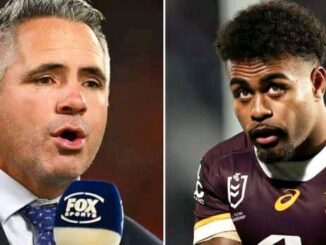
**BREAKING NEWS: Hidden $100 Million Talent Gap Puts Top Contenders at Risk; $6 Million Signing Target Raises Major Red Flags**
In a stunning revelation that could reshape the landscape of competitive sports, a significant $100 million talent gap has been uncovered, casting doubt on the prospects of several top-tier contenders. This financial chasm is hiding key weaknesses that could derail the ambitions of some of the most well-funded teams and organizations. Meanwhile, a $6 million signing target, once seen as a sure-fire asset, has emerged as a potential red flag, raising concerns about the long-term stability and performance of those willing to invest in him.
The $100 million talent gap refers to the stark financial disparity between the top competitors and their less-funded counterparts, a divide that has only grown in recent years. This financial imbalance has allowed wealthier teams to stockpile elite talent, leaving smaller organizations struggling to keep up. While some teams have managed to mitigate this gap with strategic development and clever scouting, the difference in resources remains undeniable. This gap could play a pivotal role in shaping the next phase of competition, especially for those who may have appeared as formidable contenders in earlier seasons.
Despite the apparent strength of the leading teams, this hidden gap is not without its dangers. Teams that rely too heavily on financial power and star-studded lineups may find themselves vulnerable to unforeseen challenges, such as injuries, underperformance, or unexpected market shifts. While a large budget allows for the acquisition of top-tier talent, it doesn’t necessarily guarantee a cohesive, winning formula. The talent gap, though seemingly invisible to the casual observer, could be the Achilles’ heel for organizations that fail to develop depth and resilience beyond their marquee players.
Adding further complexity to the situation is the rising concern over a $6 million signing target who has been the subject of intense recruitment battles. Initially considered a key figure who could help bridge the talent gap, this player now raises significant red flags. Reports have begun to surface that question whether the investment in such a player is truly worth the price. Concerns range from potential injury risks to the player’s ability to deliver under high-pressure situations, which could ultimately affect not only his performance but the team’s overall dynamic.
The $6 million signing target, once viewed as an asset that would elevate any team, has now become a source of uncertainty for organizations willing to invest. With the stakes higher than ever, teams are faced with the dilemma of whether to commit to this player, potentially throwing off their financial balance and disrupting team chemistry, or to explore other options that might offer better value.
As the situation continues to unfold, the broader implications for the industry are becoming clear. The combination of an enormous talent gap and concerns over expensive signings presents a challenging reality for teams, many of whom are now rethinking their strategies for building competitive rosters. Teams that are able to adapt and make smart, calculated decisions may stand to benefit the most in the long run, while those that are too reliant on financial power and high-profile signings may find themselves facing serious consequences.
The $100 million talent gap and the $6 million signing red flag have undoubtedly cast a long shadow over the competitive landscape, leaving teams with difficult choices and few guarantees. As the season progresses, it will be interesting to see which organizations can navigate these challenges and emerge as true contenders.



Be the first to comment